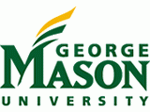Problem Statement
Current clinical ultrasound transducers are rigid and require experienced sonographers to achieve quality images; since the transducer is not free-forming and is a flat surface that is pressed onto the human body, it is not ideal. The rigidity of this device could be harmful for data collection, where muscle compartment density and location are essential. These devices may skew and disfigure the muscle bands, preventing the user from viewing an accurate image of the tissue. Also, clinical ultrasound machines use a probe to control the transducer. This creates an issue if it were to be implemented into prosthetic control, as it would be quite cumbersome and unwieldy. This creates the need for a miniaturized transducer that could be used in this manner.
With our flexible ultrasound transducer, we hope to eliminate the use of a sonographer to get an ultrasound image from the device. The device would require an adhesive that would allow attachment to the skin and hold well enough to maintain contact during movement of the tissue. The device would need to fit to the contours which are of interest for imaging, e.g. a forearm or thigh. Our device would be able to form to any curve and then solidify in shape. The reason for this design choice is that the user, Dr. Sikdar, wants the device to be able to be used on amputees who will be using prosthetics. This way, the transducer is fitted to the user and can aid the function of a custom prosthetic.
This device will have to able to output the radio frequency data and, with some external processing, construct a two-dimensional image of the imaged tissues. The images produced do not have to be as high-quality as current clinical ultrasound transducers, which cost thousands of dollars to purchase, but marginal degrees of accuracy and resolution are desired. The resolution needs to be significant enough that major landmarks, and perhaps even something the size of muscle compartments themselves, are identifiable via the decoding algorithm used in production of the image.
Previous work has been done in this venture, in which groups have built flexible transducers. They have been built for high resolution and low depth penetration into the tissue; these devices have center frequencies of 20 MHz, or even higher. However, for the transducer we are designing, the device also needs to be able to view at least 4 cm deep into the tissue to view entire muscle compartments and identify bone interfaces. To contrast, our device needs to operate at a lower frequency to acquire an image with greater depth than current flexible transducers.
Objectives
- The device sends signal to an oscilloscope, which is then sent to a PC
- These elements produce signals which can produce an image
- The transducer minimizes signal loss through proper damping and reduces attenuation from propagation through different medium with “stepping down” matching layers
- The transducer exterior is compatible with light adhesive coatings to attach the device to the patient
- Uses a low frequency and a short pulse duration to improve axial resolution and bandwidth
- Uses a narrow beam width for greater lateral resolution
- Needs to work on a pulse/echo system
- Needs to send a pulse from one element and have the echo picked up from the other elements.
- Needs to have a low insertion loss
- Mark where the elements are in space to help recreate an image
- Code needs to create a video of the muscle movements over time and store it
- Need a user interface/GUI for the user
- The transducer elements of the array operate one at a time; one element produces and then receives the echoes before the next element can emit
Functions
- The device sends signal to an oscilloscope, which is then sent to a PC
- These elements produce signals which can produce an image
- The transducer minimizes signal loss through proper damping and reduces attenuation from propagation through different medium with “stepping down” matching layers
- The transducer exterior is compatible with light adhesive coatings to attach the device to the patient
- Uses a low frequency and a short pulse duration to improve axial resolution and bandwidth
- Uses a narrow beam width for greater lateral resolution
- Needs to work on a pulse/echo system
- Needs to send a pulse from one element and have the echo picked up from the other elements.
- Needs to have a low insertion loss
- Mark where the elements are in space to help recreate an image
- Code needs to create a video of the muscle movements over time and store it
- Need a user interface/GUI for the user
- The transducer elements of the array operate one at a time; one element produces and then receives the echoes before the next element can emit
Device Requirements/Constraints
- Short post-processing time; less than 2.5 seconds from signal acquisition to image production on PC
- All of the elements send and receive ultrasound waves, signal data is properly sent out for processing
- The design utilizes a thick backing layer 3 mm to dampen the outgoing signal and prevent reflection of returning echoes
- The matching layers will bring the velocity of the waves as close to 1,540 m/s as possible (speed of sound through homogeneous tissue) to reduce attenuation as the waves propagate
- 4-12 MHz frequency and 10 microsecond pulse duration
- Has at least a 50% -3dB bandwidth
- Excellent wiring and proper shielding should reduce insertion loss as the signal is sent between devices
- Need the decoding method to be comparable to previously reported results (about 85% precision and recall)
- Needs to run for at least 10 hours of continuous use
- Needs to spatially resolve the difference between chicken and rods with 5% percent error (representative of tissue, tests accuracy)
- Multiplexing will allow operation of the elements with proper ordering and timing
